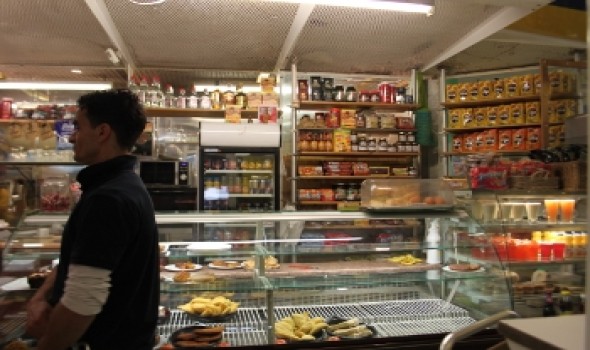Latin Americans: no longer invisible
Latin Americans: no longer invisible

The number of people in Britain from Spanish- and Portuguese-speaking countries in the Americas has increased rapidly in the last decade. They are generally identified by nationality – Brazilian, Colombian and so on. Now, reports Rebecca Suner, some are campaigning to be treated as an ethnic group. A year after the London borough of Southwark recognised Latin Americans as an ethnic group, campaigners are still trying to convince other councils to follow suit. Without recognition, say campaigners, local authorities cannot quantify – and help provide – the health, housing and education needs of the estimated 186,500 Latin Americans living in Britain, mainly in London. Recognition, they say, would also enable local authorities to ensure the community enjoys equal opportunities.
One of the guiding spirits of the recognition movement was Claudio Chipana, who left his native Peru 24 years ago to attend a philosophy conference in London. He learned of the challenges facing Latin American migrants, such as workplace discrimination, and in 2010 he co-founded the Latin American Recognition Campaign (LARC). The countries of Latin America are varied, he admits, “but we all have similarities in our lives living abroad, that’s why we feel we are together. “LARC has managed to attract a lot of support and attention,” says Chipana, and the Latin American community is increasingly known and enjoyed by the general public through music, food and culture. “ But it is still not visible to the authorities,”he adds.
Lucila Granada, coordinator of the Coalition of Latin Americans in the UK - formed after publication of a 2011 report about Latin Americans in the UK, No Longer Invisible – says, “If you don’t gain visibility you will have to deal with your problems alone. “People pay their taxes. They live here. Many have citizenship. They are here to stay and raise their children but the authorities are just ignoring them.”
Latin Americans started emigrating to the UK in the 1970s. Many were refugees escaping the Pinochet dictatorship in Chile and authoritarian regimes in Uruguay and Argentina. A second wave arrived from the late ‘90s, mainly Colombians fleeing junta violence and Ecuadorians and Bolivians struggling with the authorities are ignoring them.” political and economic instability. Today, Brazilians are thought to be the most numerous Latin American nationality. And since the economic crisis in Europe, many Latin American immigrants who had settled in Spain or Portugal, their main European destinations, have re-located to The UK.
The No Longer Invisible report by Queen Mary University and the Latin American Women’s Group pointed out that 85 per cent of Latin Americans here are employed, and their take-up of benefits is much lower than the average Londoner. But almost half live in inadequate housing and 40 per cent have experienced workplace abuse and discrimination. They are also ten times more likely than the average worker to earn less than the national minimal wage. Campaigners believe recognition will help tackle such problems. Pressure for recognition is targeted at London boroughs with a strong Latin American presence such as Lambeth, Haringey, Islington and Hackney. Two immediate battles are to preserve Latin American businesses in the £1.5 billion Elephant & Castle regeneration in south London (“It’s important to maintain its Latin-American character. Regeneration shouldn’t mean relegation,” says Chipana) and to avert the threat to turn the country’s largest Latin American market, El Pueblito Paisa outside London’s Seven Sisters station, into a shopping centre and luxury flats.
Meanwhile, Chipana orders two Postobon Manzanas at the counter of Los Colorados and salsa music plays as the owners of the Tienda Latina chat in Spanish. It could be a weekend in Buenos Aires or Lima but it’s the Elephant & Castle shopping centre, where many Latin Americans congregate, living their lives and contributing to and learning from their adopted country. Ticking the box Ethnicity on census forms can be “races” (such as White, Asian, Black) or geographical (Indian, Pakistani, Chinese). If Latin Americans are recognised as an ethnic group the census form will contain a ‘Latin-American’ box to tick. For now, they have the option to write it in the ‘other’ box (for which LARC campaigned in 2011) – the space for self-definition of one’s ethnicity. ‘Arab’ was included as a category under the ‘other’ group for the first time in 2011.
Article by: Rebecca Suner Photo by: Dena Arya


